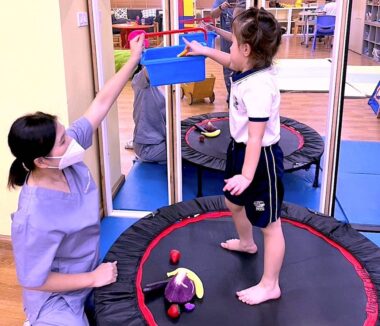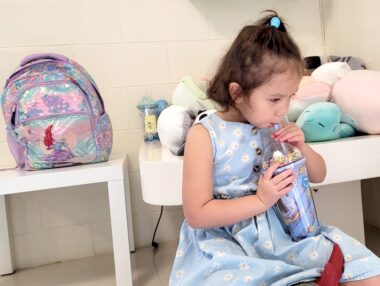How to make occupational therapy for AADC a part of daily routines
A variety of strategies at a variety of times helps, experts say at online session
Written by |

Instead of asking what’s the matter with my child, ask what matters to my child. What do I need for them to be happy and successful?
After our daughter, Rylae-Ann, was diagnosed with aromatic l-amino acid decarboxylase (AADC) deficiency, the traditional milestones by age went out the window. As we talked with our occupational therapist, she helped us realize that our daily routines involved important skills that shouldn’t be overlooked. Over time, they amount to a significant period of activity.
As part of this mindset change, our daughter’s daily tasks became an opportunity to help her build skills to find happiness and success.
Occupational therapy caregiver event
In March, we hosted our second online event for caregivers, which focused on incorporating occupational goals with educational activities. We invited Warinthorn Ramasoot, a developmental psychologist and founder of Unichild Clinic in Bangkok, Thailand. Ms. Ramasoot and her colleague Dr. Chaithaya provided an overview of their strategies and how caregivers can combine occupational therapy goals at home.
After the presentation, we opened the meeting for questions. Here are some answers to them.

The flyer from the caregiver virtual meetup about occupational therapy in March. (Courtesy of Richard E. Poulin III)
How often and how long?
My wife and I first made our routines very structured. Then we added 30 minutes to every day dedicated toward occupational therapy goals. Daily reserved time slots worked for us and aligned with what the doctor suggested. However, here are some crucial points.
First, instead of considering this therapy a “session” with your child, think of it as a daily activity, which can then be scheduled throughout the day. They should be about building independence and life skills, such as eating, dressing, and holding objects.
Second, you must also consider the goals specific to your child and how long their attention span is. Start short, and then gradually make activities longer. If you find your child showing too much frustration, leave the activity. This frustration point will be your time goal as a caregiver to beat next time.
Some activities will attract your child more than others. You may find they have a longer attention span at a particular time, while they want nothing to do with the activities at other times. Create a plan and record information. Don’t get frustrated yourself, and celebrate the small accomplishments along the way, no matter how insignificant they may seem.

During Rylae-Ann’s occupational therapy, her parents took notes on how to incorporate fine motor goals into daily routines. (Photo by Richard E. Poulin III)
Which occupational therapy strategies should I focus on first?
The doctor showcased several strategies during the presentation and explained that parents should use a variety of them. This approach is considered holistic and multipronged.
Don’t think of it as one thing or one way. Instead, imagine you have a toolbox; the different strategies are the tools in the box. Each activity requires its own tools or a combination of tools. Aspects of your home program will also need to focus on multiple areas.
If they had to focus on a crucial area, the core muscles were the ones the team highlighted. These help develop upper body strength to position the body in the way it was designed.
Focusing on core strength to create a natural posture was similar to the therapist’s recommendations from our physical therapy event in February. Humans are designed to be upright. Supporting this position requires stability, which is derived from the core muscles. We were unaware of these tips when Rylae-Ann was a baby, resulting in her hip surgery.

Over time, Rylae-Ann gained fine motor independence thanks to her consistent practice. (Photo by Richard E. Poulin III)
Occupational therapy added to your daily routine
Other areas of focus you may consider include fine motor skills, bilateral coordination, eye-hand coordination, oral motor skills, and visual perception. It may seem like a lot to manage, but start small. Create a routine with a child and then build on that routine.
Medicine adds days to lives; occupational therapy adds life to days. Embed occupational therapy strategies into your daily routine and learn how to transform hopelessness into hope, can’t into can, and make the impossible possible.
Note: AADC News is strictly a news and information website about the disease. It does not provide medical advice, diagnosis, or treatment. This content is not intended to be a substitute for professional medical advice, diagnosis, or treatment. Always seek the advice of your physician or other qualified health provider with any questions you may have regarding a medical condition. Never disregard professional medical advice or delay in seeking it because of something you have read on this website. The opinions expressed in this column are not those of AADC News or its parent company, Bionews, and are intended to spark discussion about issues pertaining to aromatic l-amino acid decarboxylase deficiency.






Leave a comment
Fill in the required fields to post. Your email address will not be published.